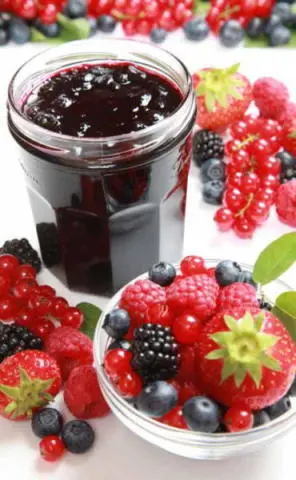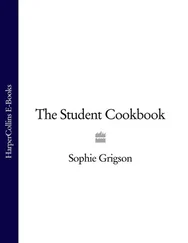15. When the timer goes off, turn off the burner and remove the lid of the canner. Allow the jars to rest in the water for at least five minutes; this allows the temperature of the jars to gradually adjust to the outside temperature. This is important to reduce risk of cracking, but remember that the food in the jars continues to cook as long as the jars are in the hot water.

16. After the jars have cooled for at least five minutes, carefully remove them. Place them upright onto a thick-folded towel; this prevents temperature shock between the jar and the surface area, which can cause the glass to break.
17. Do not touch the jars for a minimum of twelve to twenty-four hours.
18. Don’t panic if your seal has not sealed within twenty-four hours; the food can be reprocessed or you can put it in the fridge and use it first.
19. Now the only thing left to do is to label each jar lid and store in a dark, cool, dry place.
Checking for a Seal
There are three ways to check for a proper seal:
• The best way to check for a good seal is to push down on the center of the lid. If there is no give, then the seal is good.
• You can also tap the center of the lid with a spoon. If it makes a high-pitched ring, it’s sealed, but if it makes a dull thud, it isn’t.
• Finally, you can hold the jar at eye level and look straight across the lid. The lid should be slightly concave (curved down in the center). If the center of the lid is either slightly bulging or is flat, it may not be sealed.
If you find any jars that don’t have a tight seal, then simply put those jars in the fridge and eat the contents within five days, or repeat the canning process immediately.
Tips for Water-Bath Canning Safety and Food Handling
• Always check the recipe, your manufacturer’s guide, or your local agricultural extension office to be sure that the type of food you’re canning has enough acidity to be canned in a water-bath canner.
• If you’re canning mixed foods containing both highand low-acid foods (e.g., some soups, relishes, stews), they must be processed in a pressure canner to ensure against bacterial growth and spoilage.
• Always wipe the rims of the jars with a clean towel before placing the lids on the jars. Food and liquids on the rims of the jars can prevent them from sealing properly.
• When selecting and preparing foods for canning, always check carefully for mold, bruises, holes, and cuts that may harbor bacteria or insect eggs.
• If there are children present, be sure they’re safely away from the stove and the canner during processing and that they understand that jostling or moving the jars during cooling can interfere with proper (and safe) sealing.
• Always make sure that your cooling jars are safe from jostling or tipping for at least 12 to 24 hours. You may want to keep pets and small children out of the kitchen during the cooling period.
As you can see, water-bath canning is a fairly simple process, and the extra tips and hints included in this book will make canning all of your favorite foods even easier. Before getting to the recipes, the next chapter addresses a few additional tips about one of the most popular canning groups: sweet spreads.

6
PRESERVING JELLIES, JAMS, AND OTHER SWEET SPREADS
Jams and jellies are versatile and can be used for just about anything in the kitchen. Preserving your own jellies and jams is a great way to have wonderful summer flavors all year round, waste less produce, and save a lot of money on store-bought spreads. Also, many store brands contain unwanted ingredients and tons of sugar. There’s no reason to pay more when you can make your own at home and decide exactly what goes in it and what stays out.
Jelly and jam have several different textures, flavors, colors, and uses. Most people only think of jelly or jam for breakfast. However, there are thousands of different possibilities when creating your own. For example, jalapeño jam is a great way to spice up a meal.
There are several different types of spreads. Here are the most common:
• Jellyis a semisolid mix of juice and sugar that’s firm enough to hold its shape.
• Jamis a jelly that contains bits of crushed fruit or vegetable.
• Preservesare small fruits left whole or fruit cut into pieces and preserved in thick, clear, jellied syrup.
• Marmaladeshave more concentrated flavors and are soft jellies often containing only the peel of citrus fruits.
• Compotesare made with either whole pieces or large chunks of fresh or dried fruits that have been simmered down in a syrup made from sugar and possibly other seasonings.
• Chutneysare thick sauces made from fruits, spices, sugar, and vinegar. The fruit is generally pureed or cooked down to make part of the sauce, and there may or may not be chunks.
Sweet spreads consist of preserved fruits using sugar and sometimes a thickening ingredient called pectin . Pectin is a substance that can turn into a jelly texture when matched with the correct amount of acid and sugar. It can be found in all fruits, but some contain more than others. You can buy pectin at most grocery stores in the baking aisle, or you can blend fruits with low pectin amounts with other fruits that contain a higher amount of pectin.
For example, cranberries contain a ton of pectin and therefore no added pectin is required to create a spread. So if you want to make berry jam, you can add cranberries to it to raise the pectin levels. Cranberries are also a great way to cut down the sweetness level of a spread that may have extra-sweet berries in it, such as strawberries.

Here are some useful tips for making your jams, jellies, and preserves delicious and successful:
Tips for Making Jams, Jellies, and Preserves
• Making these in small batches helps ensure that the fruit will cook quickly and the color and flavor will be better.
• When you’re creating your own jam and jelly recipes, remember this guideline: for every cup of fruit you use, you’ll want to add ¾ cup of sugar. For example, 4 cups of fruit will require 3 cups of sugar. Some low-sugar recipes and recipes using apples and other high-pectin fruits can use less, but this is a good general rule.
• Something to keep in mind when choosing your fruits is that perfectly ripe fruit or really sweet fruits contain less pectin than barely ripe fruits. So when picking or purchasing, choose slightly unripe fruit for your spreads.
• If you are using very ripe or especially sweet fruit, add 1 to 2 tablespoons of fresh or bottled lemon juice. The acid in the lemon juice will help the mixture thicken.
• You do need to watch out for scorching or burning fruit, as the sugar in the recipe can burn quickly. The best ways to prevent this are to watch your heat and adjust to a lower setting if needed, and to stir almost constantly during the cooking process.
• To test your jam or preserves to see if they’re done, take a spoonful out of the pan and set it aside. If it holds its shape after about a minute, you should be ready to start canning the mixture.
Читать дальше















